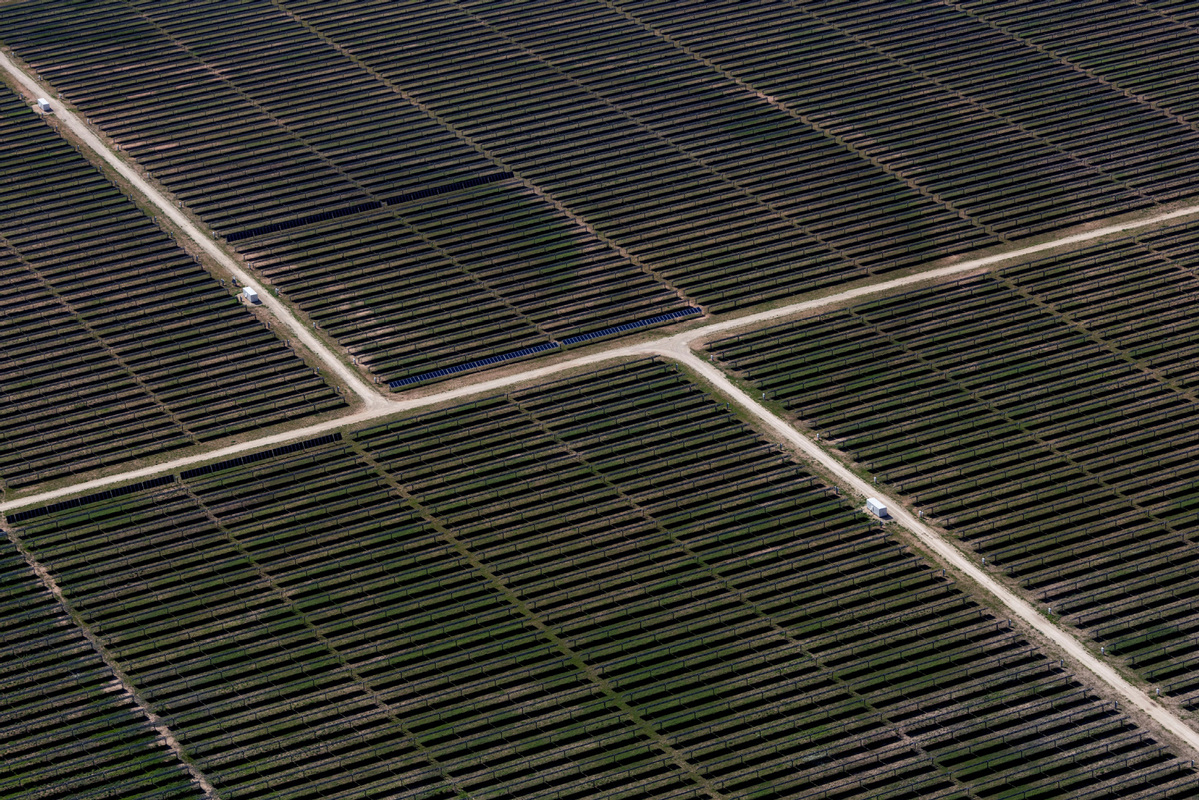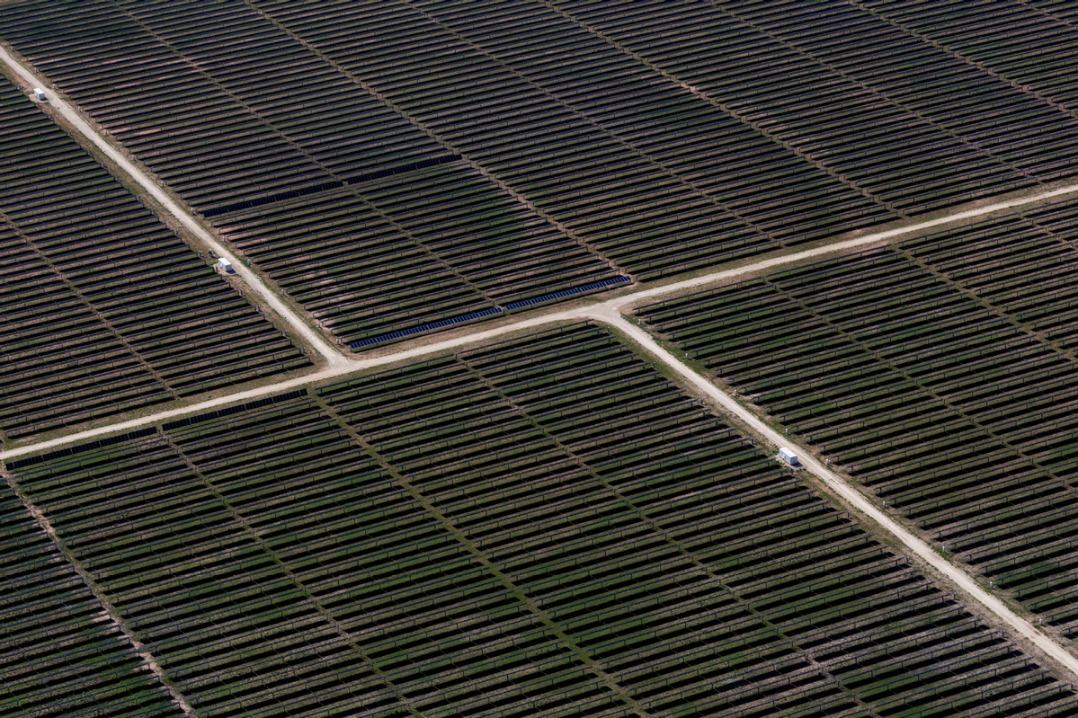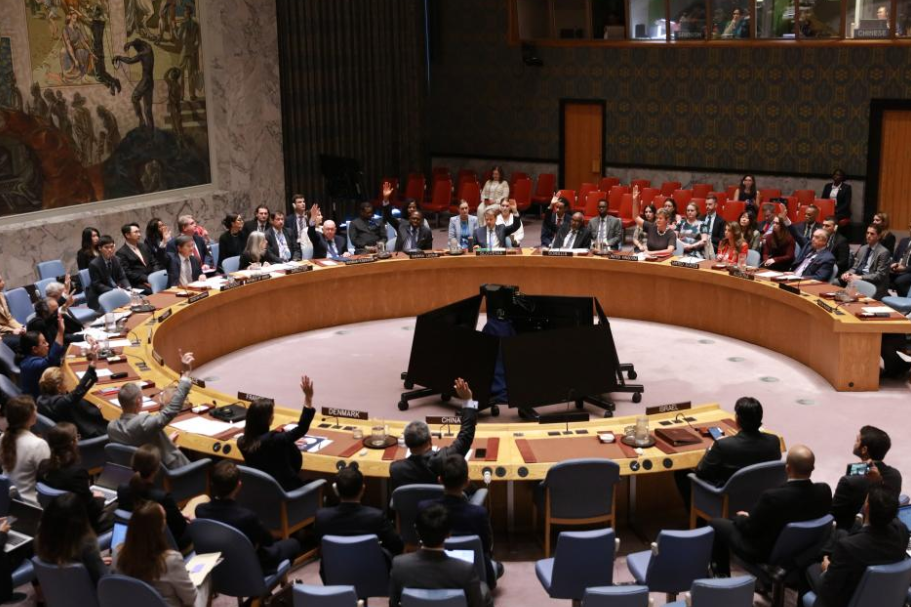US solar and wind energy face headwind
Trump administration's cuts?to subsidies put future of?renewable projects in doubt


Houston-based Engie North America is slashing its planned investment in the United States by 50 percent due to tariffs and regulatory uncertainty, according to a CNBC report.
David Carroll, the chief renewables officer who oversees the US operations of Engie, a global energy company based in Paris, said the cut could be even more.
Engie North America has solar, battery storage and wind power projects across numerous states with a big presence in Texas. According to its website, it employs about 4,500 people in North America.
Carroll told CNBC in August that multinationals like his company have long regarded the US as one of the most stable business environments in the world.
However, that assessment is changing in Engie's boardroom and across the renewable energy industry, he said.
"The stability of the US business market is no longer really the gold standard," Carroll said.
Engie's decision is in response to the US policy change on green energy. Under the One Big Beautiful Bill, which was signed into law by President Donald Trump in July, tax credits for wind and solar projects will be phased out much sooner than stipulated in the Inflation Reduction Act — the budget bill passed in 2022 when Joe Biden was president — under which qualified wind and solar projects would enjoy 10 years of tax credits.
Solar and wind power unfavored
According to a policy analysis by Latham and Watkins LLP, a global law firm offering regulation and legal services to a wide range of industries, projects that started construction before 2025 will not generally be impacted. However, new projects have to either begin construction before July 5, 2026, or be placed in service by Dec 31, 2027 to qualify for credits.
An August report released by the US Energy Information Administration showed that the US added 12 gigawatts of utility-scale solar electric generating capacity in the first half of 2025. An additional 21 GW is expected to be added in the second half of the year.
The report said wind would bring another 7.8 GW, while natural gas would add 4.7 GW of additional capacity this year.
Wind and solar energy have been growing steadily in the past decade, and have become the primary source of new capacity generation.
However, the new policy will drastically slow the growth of solar and wind power, numerous analyses show.
Less investment and cancelled projects
A policy analysis by Zero Lab at Princeton University showed tax credit rollbacks on solar and wind power will drive down investment in the sector. It estimated that half a trillion dollars of investment will be lost between 2025 and 2035.
This year has already seen slowed investment. According to data released by Bloomberg New Energy Finance, investment in utility-scale solar fell by 19 percent in the first half of 2025, in contrast to the 10 percent growth in global investment in all renewable energy projects.
That's a decline of $20.5 billion — or a 36 percent drop over the second half of 2024. BNEF said this was due to the industry's response to "deteriorating policy conditions".
In reality, the solar and wind power industry faces not only a reduced timeframe for tax credits but also a possible future of no permits and cancelled projects.
"We will not approve wind or farmer destroying Solar. The days of stupidity are over in the USA!!! MAGA," Trump posted on social media on Aug 20, accusing those projects to be "the scam of the century" and blaming them for "breaking increases in electricity and energy costs."
A few projects have been stopped or interrupted by the Trump administration.
On Aug 22, the Trump administration halted an almost finished offshore wind project off the coast of Rhode Island.
Matthew Giacona, acting director of the Bureau of Ocean Energy Management, sent a letter to Danish company Orsted North America "to halt all ongoing activities related to the Revolution Wind Project" to "address concerns related to the protection of national security interests of the United States".
The project is located in federal waters 24 kilometers (15 miles) south of Rhode Island. It started in 2023 and planned to begin providing power next year.
"Any pause or uncertainty at this stage could ripple across jobs, contracts and communities already benefiting from the project," Erik Milito, president of the National Ocean Industries Association, said in a statement.
"It's an attack on our jobs," Rhode Island Governor Dan McKee said. "It's an attack on our energy. It's an attack on our families and their ability to pay the bills."
The Revolution Wind project is not the first one caught in this situation. Back in April, the Department of the Interior halted an offshore wind project near the coast of Long Island. The government said the project, called Empire Wind, "was rushed through by the prior administration without sufficient analysis." The project resumed after intervention by Senator Chuck Schumer and New York Governor Kathy Hochul.
On Aug 25, the Trump administration filed a motion in federal court to revoke the federal permit issued to US Wind last December for a wind farm proposed off the coast of Ocean City in Maryland.
US Wind Vice-President of External Affairs Nancy Sopko issued a statement that the company still believes in the validity of its 2024 federal permit.
"Our construction and operations plan approval is the subject of ongoing litigation, but we remain confident that the federal permits we secured after a multi-year and rigorous public review process are legally sound," Sopko said in the statement.
Cases like those have renewable energy companies worried that projects will no longer receive permits.
"This is not the first time extreme partisan politics has derailed sound energy policy," Jason Grumet, chief executive of American Clean Power, an industry group, said in a statement responding to the Revolution Wind project. "The unfortunate message to investors is clear: the US is no longer a reliable place for long-term energy investments."
Less capacity, higher costs
According to the Zero Lab report, cumulative new solar capacity additions will be reduced by 29 GW and wind capacity by 43 GW from 2025 to 2030.
The reduction will be much greater in the longer term: 140 GW less solar and 160 GW less wind power through 2035.
Overall, the policy will drive up total energy costs by $28 billion by 2030 and by $52 billion by 2035.
The report said that so far 99 renewable energy projects have been delayed or cancelled, and 23 projects have laid off staff. Delayed or cancelled investment amounted to more than $33.8 billion.
Overall, "60 percent of listed projects have been canceled since Trump's election," said the report.
The report found that almost 14 GW of planned energy generation have been lost from canceled or delayed projects, enough to power 8.4 million homes.
"Republicans are fueling an energy crisis and inflicting a massive utility bill hike on Americans across the country," said Climate Power senior advisor Jesse Lee in a statement. "This report details just how badly this bill is hurting Americans."
If Revolution Wind is interrupted permanently, it means a loss of capacity for powering over 350,000 homes at a low price of 9.8 cents per kilowatt-hour for 20 years.
Fewer jobs
Cancelled projects means jobs lost. The Solar Energy Industries Association published an analysis showing that the rollback on solar and wind tax credit will result in job losses of 330,000 nationwide by 2030.
In the case of the Revolution Wind Project in Rhode Island, its halt by the government effectively "just fired 1,000 of our members", said North America's Building Trades Unions.
Texas will be hard hit because the state ranks No 1 in both wind and solar power production, according to the US Energy Information Administration.
For June 2025, Texas capacity of wind power was close to 43 GW, accounting for over 27 percent of the US total. The state's capacity for solar power reached 41.5 GW, also 27 percent of the US total solar power output.
States fast-track solar and wind projects
In August, Colorado Governor Jared Polis directed state agencies to streamline and accelerate solar, storage and wind projects so they may qualify for federal incentives before they expire.
"Today we are taking action to ensure that Coloradans can easily access clean energy savings, especially ones that expire soon," Polis said in a policy statement. "We must provide confidence to the clean energy industry that Colorado is open for business as tariffs, shifting federal rules, supply chain crunches and market uncertainty risk delaying investment in these affordable domestic energy resources."
Within a month, a few projects have been proposed to get a quick greenlight for the construction of up to 4 GW of projects that use a mix of wind, solar and battery storage, according to Colorado Public Radio.
Maine fast-tracked plans to procure 1,600 GW of renewable energy by giving developers only two weeks to submit proposals in July, which would give them a better chance to get the tax credits. If realized, that will increase Maine's power supply by 13 percent.
It's reported that Oregon, Pennsylvania and Minnesota are also considering proposals to fast-track renewable electricity procurements to beat the deadline of the end of 2027.
A number of industry analysts said that some states are committed to renewable energy, and demand for more energy makes solar and wind projects desirable even without the tax credits.
"You don't build a natural gas plant overnight, and there are real supply chain constraints — you can't even get the parts," Amisha Rai, senior vice-president of advocacy with Advanced Energy United, told Stateline.
The US is experiencing a surge in demand for new electricity, driven by the development of electrical vehicles and growth in data centers to support technologies like artificial intelligence.

































